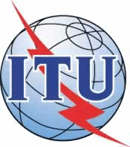The Study
Group (SG) 13 Meeting from ITU-T (held in Geneva, Switzerland from October 10
to 21 has seen an input from SESERV in terms of a document proposal, which shall
discuss the need, the scope, the overall structure, and the overall planning
for a new standards document to be opened in relation to Recommendation Y.3001
“Future Networks: Objectives and Design Goals” (as approved on May 20, 2011).
With Y.3001 being available by now, and with the Recommendation providing a
balanced and embracing outline of 4 design goals and 12 derived objectives for
Future Networks (FN), the authors perceive the important question to be
addressed as follows: How can design
goals and objectives determined be achieved?
The authors propose for the new document a narrow scope on methods to achieve the socio-economic design goals and objectives outlined in Y.3001 – “Economic incentives” (Section 8.7 in Y.3001) and “Social and economic awareness” (Section 7.4), respectively. Consequently, the new document is proposed to be entitled “Methods to Achieve Socio-Economic Design Goals and Objectives for Future Networks”. As a suited method to be covered the authors propose to include the tussle analysis method [1]. The discussion during the SG13 meeting revealed that the interest level in SG13 is high. Furthermore, the need for such a document was accepted, the new documented was opened as Y.FNsocioeconomic, and the document’s scope was agreed upon as follows: “This Recommendation lists methods to achieve socio-economic design goals and objectives for Future Networks (FNs). When a candidate FN technology is provided, the methods listed provides a structured manner · to analyze the socio-economic effect of the technology, · to find relevant stakeholders, · to identify tussles/conflicts between them, · to help assess the expected level of achievement of a technology, and help design/select appropriate technology for Future Networks.” Y.FNsocioeconomic will see the tussle analysis method being covered. Finally, the request was issued to include a number of SG13-external experts on this field, to ensure the broadest possible background and expertise to be available for the work on such a document. |
|
|

